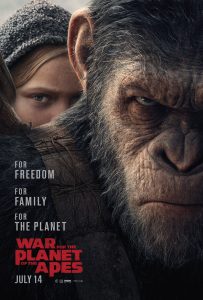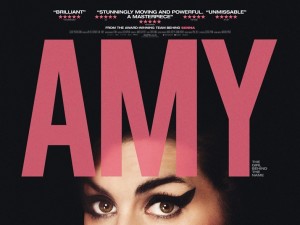A conversation between Nick Alexander, Joanna Di Mattia and Scott Halligan

Synopsis: In feudal Japan, two greedy peasants are tricked into escorting a princess – whose kingdom has been destroyed – and the general charged with protecting her, as they try to smuggle gold across enemy lines and rebuild their clan.
NICK: We’re talking about The Hidden Fortress so I thought I’d start off with a question for Jo … and the question is … well did the film inspire Star Wars as much as you thought it did? (laughs) It’s badly worded but you get my meaning.
JO: I do get your meaning. I can sort of see how it did, just very loosely with regard to, obviously, the Princess … I was going to say the planet under siege, but it’s not a planet …
SCOTT: The bits of wood …
JO: The bits of wood and you know those two bumbling fools (Tahei and Matashichi) who are actually extremely funny. Some very interesting translation. Like the word ‘shithead’ which I found jarring. I didn’t expect to see a ‘shithead’ in 1958 …
SCOTT: What about when the princess says, ‘I’m a real handful.’
JO: (laughing) Yeah. It was interesting, very modern. So they’re obviously like C-3PO and R2-D2, they’re like robot humans. No, actually from what I’d read, I expected there to be [more] … was there a Darth Vader equivalent that I missed?

NICK: No. He [George Lucas] takes things from Yojimbo, little things like cutting off the arm, like Obi-Wan in the cantina in Star Wars and other little things …
JO: He’s pillaged from everywhere really hasn’t he?
NICK: Yeah, yeah. But it is generally the plot and those two comical characters are sort of the narrators caught up in these big galactic events.
SCOTT: So Nick, as the resident Kurosawa expert how do you think this film compares to the other Kurosawa films that we’ve seen so far in the festival.
NICK: Thank you for your question (laughs). It’s less well-known for good reason, I think. Definitely compared to Seven Samurai and Yojimbo it’s less entertaining, it has less to say …
JO: (interrupting) I was just going to disagree with that but I’ll disagree when it’s my turn to speak.
NICK: Ok sure. You can talk now.
JO: I actually think it’s more like pure entertainment this film, because it seems to me more like a real kind of action-adventure film.
NICK: But not a lot actually happens …
JO: And I did find myself bored on occasions … I don’t think I’m necessarily the target audience …
NICK: But it was deliberately set out as an entertainment film, as was Yojimbo …
JO: Yeah, but that’s so much more entertaining.
NICK: I think that going back and watching Rashomon, Seven Samurai, Yojimbo and this, you can see his style evolving and by Yojimbo he was a master director. And I think that when he was going for pure entertainment like this it’s a bit more old-fashioned than Yojimbo is. There is a snappiness to Yojimbo, and I think it’s that hard-boiled influence as well.
JO: I think this is very much Mifune’s film [as General Rokurota Makabe]. I actually found Princess Yuki (Misa Uehara) an unlikable character, not that she’s evil or does anything terrible, I just didn’t feel a connection to her. But whenever he’s on screen I find him really charismatic.

NICK: He doesn’t carry a sword for most of it …
JO: He’s [almost] completely swordless.
NICK: They’re travelling under cover, posing as peasants I guess. But he does a lot of subtle acting, with sort of the same tense expression on his face, with his crossed arms and very bold stances.
SCOTT: Yeah. And it’s very appropriate for his character as the noble general.
NICK: Yeah. And he’s sacrificed a lot. He’s just given up his 16-year-old sister to be beheaded in place of the princess.

JO: To go back to Scott’s question in relation to Kurosawa’s entire output. Did this film actually become more popular after Star Wars … was there a renewed interest in it?
NICK: To be honest, at the time of Star Wars, VHS wasn’t out, so … and these films, when they were re-released I think it was always known that Lucas was influenced and they would have been shown in revival houses in America.
JO: He wouldn’t have lied about it cause that 70s generation of filmmakers wore their influences on their sleeve.
NICK: Well, just the use of wipes is enough, and Vader looking like a samurai, and the jedis … These period films are called jidaigeki in Japanese, which means period drama …
JO: That’s with a ‘g’ isn’t it?
NICK: That’s with a ‘j’. The gendaigeki is the modern day setting film … But definitely when he and Coppola funded Kagemusha in 1980 then it was completely obvious. But yeah in Kurosawa’s oeuvre (laughs) –
JO: Oeuvre (pronouncing it with an over-the-top French accent) – you have to do that French thing like you’re choking.
NICK: It’s not a word I like to use and I don’t think I’ve ever said it out loud – it’s definitely not up there but it is still entertaining and especially as you say the two bumbling thieves. Scott and I were pissing ourselves laughing when they were in the pit, digging and banging each other’s faces and stuff. How good was it?
SCOTT: (agrees) However, the funniest moment in any of these, in all of the Kurosawa films that I’ve seen, is when they believe that the princess is mute, as she’s pretending to be, and talking openly about their plans to run away and pretend they are taking the horses to drink and they’re arguing that the princess can’t understand what they’re saying, so they start acting out what they’re going to do, pretending to be horses … it’s one of the funniest things I’ve ever seen.
JO: It is very funny actually.
NICK: So what did everyone think of the duel between Mifune and his old friend (Susumu Fujita as General Hyoe Tadokoro).
SCOTT: I think it was quite majestic. It seemed like that was a planned sequence from the start cause it was given so much time …
JO: Like a set piece to kind of work a lot of other things around …
SCOTT: A set piece, that’s exactly the right word.
NICK: It’s a spear fight …

SCOTT: Yeah, right, but quite majestic, because of the length of the spears, and definitely an inspiration for the light saber duels in Star Wars.
NICK: Yeah, definitely, Vader and Obi-Wan. But also brilliant use of the widescreen image which was newish at the time.
JO: Yeah, absolutely. I was really impressed though with the scene leading up to that when Mifune is riding the horse. There’s no stunt double is there – I couldn’t see it. No hands, straight back … It’s quite incredible!
NICK: The pose with the sword, the balance … It’s amazing!
SCOTT: It almost look like he floats … that magic in Crouching Tiger, Hidden Dragon, that kind of … magic ability.
NICK: It’s genuinely impressive.
JO: Really, really impressive. I watched it twice. I just think, and it shows [how] Kurosawa’s movies have a really strong energy to them.
NICK: Especially those lateral tracking shots.
JO: A really strong sense of movement. The cinematography was impressive. I realised when I was watching it that so much of my black and white movie viewing is of interiors where you get that really strong sense of light and shadow like in Hollywood films of the 1940s …
NICK: Film noir.
JO: Yeah. But Kurosawa is one of the major black and white photographers of outdoor scenes and you get that really … I mean I was watching this on a 15-inch MacBook screen and the level of texture in that landscape, that quite unforgiving landscape they were in, I just thought was brilliant.
SCOTT: Certainly we’ll talk about it more when we talk about Rashomon especially but even in this it’s just beautiful to watch isn’t it.
JO: Yeah, it is. Absolutely stunning.
NICK: The stuff with the pond, the stream and all that. Like this is from a Blu-Ray, the texture of the rocks, when they’re going up the hills and all that … It looks amazing.
SCOTT: What do we think of the fire festival? Which was something that happened with the locals that they were hiding amongst given that they were carrying bundles of wood, it’s just convenient that a fire festival happened to be going nearby …
JO: (giggling uncontrollably)
SCOTT: But, um, yeah it reminded me almost at times of a Ku Klux Klan meeting.
NICK: You know it was like really well choreographed. You often see, in films of that era, from around the world, a dance sequence and it all sort of ends up looking the same … but that’s like genuine energy for a lot of people.
JO: Mifune wasn’t dancing much though, I was expecting him to … try a little harder.
SCOTT: He was making an effort.
NICK: You can’t bag him for his sword-fighting, horse-riding or spear-fighting. You can bag him for his dancing.
SCOTT: You were saying that it was very pagan ..
JO: Oh, yes, I did. Yeah it felt very pagan, which is something I don’t associate really with Japanese culture.
NICK: It’s usually Buddhism, Shintoism, or some other –ism.
SCOTT: What about the meaning, the importance of the song that they sing?
NICK: It turns the spear guy [General Tadokoro] when the Princess sings it. Do you believe that he would actually turn?
JO: The song melts his heart … I have to believe it. And it’s a better ending if he turns than if he doesn’t … Do we ever find out where that scar comes from?
NICK: Yeah, his boss punished him and humiliated him because he wasn’t killed.
SCOTT: One of those instances where Kurosawa with the use of make-up, transforms some character … it’s some manifestation of their inner … some kind of compromising of their values or some horrible, internal struggle or torture that they’ve gone through that manifests in their appearance …
NICK: Good point.
JO: But it’s interesting too the way [Kurosawa] ends the film, he ends on a comical note, giving the two thieves that one piece of gold and you think they’re going to fight over it again.
SCOTT: More broadly, just to conclude, was the use of those two characters as a narrative point to come back to, was that something quite new, even more broadly than Kurosawa.
NICK: Eisenstein used it in silent cinema, it was called typage, so where he would have a class of people, but couldn’t, you know, like he would have certain representative characters that he would keep returning to and follow.
SCOTT: Yes, very Shakespearean.
NICK: I see that this is the same thing. And you’re right, Rosencrantz and Guildenstern [from Hamlet]. But I kept thinking typage when I was watching it. But yeah, you’re probably right with the Shakespearean angle.





